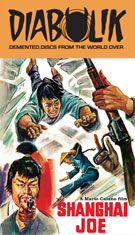

Color, 1973, 98 mins. 4 secs.
Directed by Mario Caiano
Starring Chen Lee, Klaus Kinski, Carla Romanelli, Gordon Mitchell, Katsutoshi Mikuriya, Robert Hundar, Giacomo Rossi Stuart
Cauldron Films (Blu-ray) (US RA HD), Turbine, X-Rated Kult (DVD) (Germany R2 PAL), Seven7 Editions (France R2 PAL) / WS (2.35:1) (16:9)
The inevitable mingling 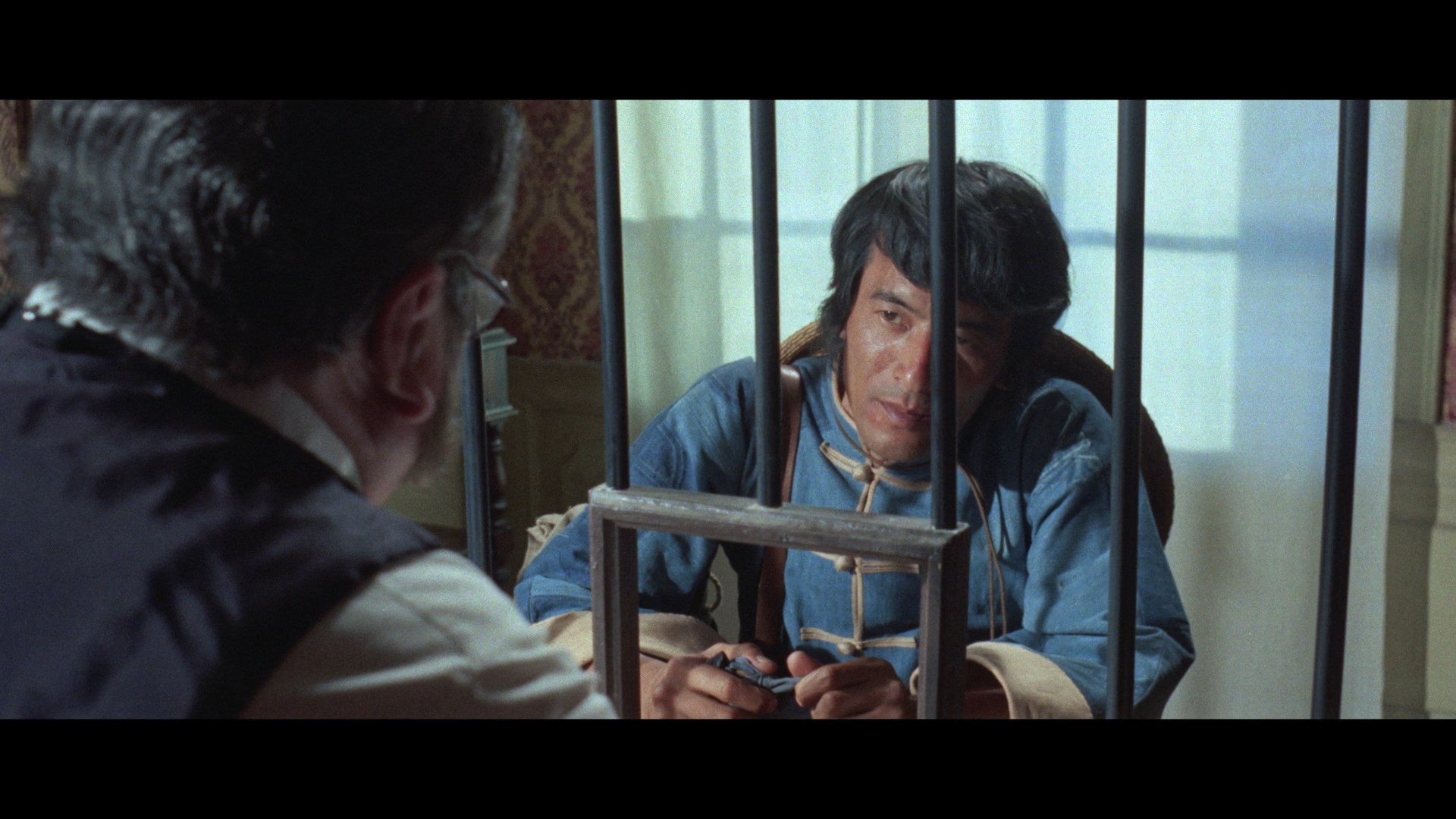 that occurred between European exploitation and Hong Kong kung-fu films produced a wide and
that occurred between European exploitation and Hong Kong kung-fu films produced a wide and 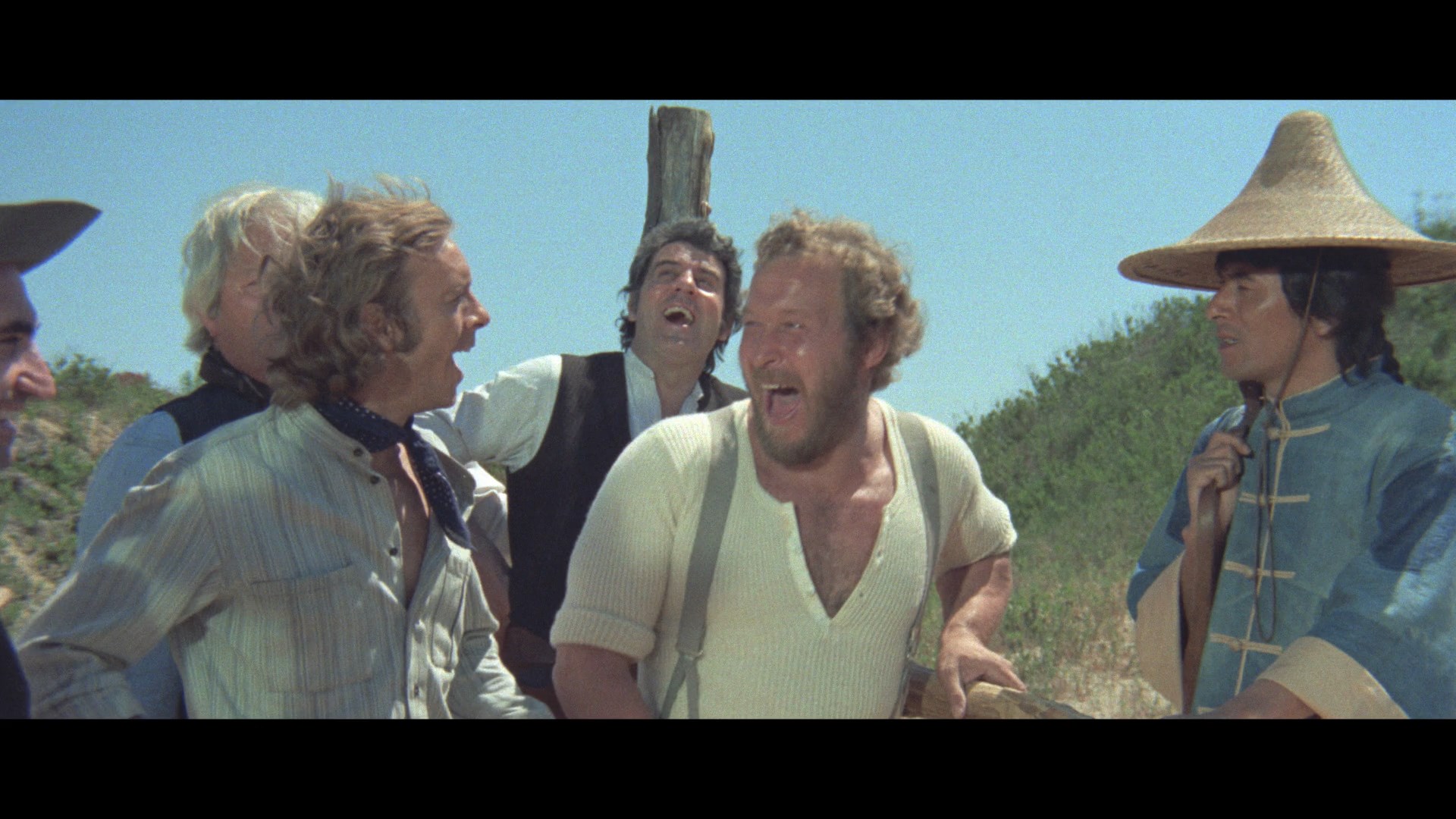 weird spectrum of films like Antonio Margheriti's The Stranger and the Gunfighter, Hammer's The Legend of the 7 Golden Vampires, Kung Fu? From Sicily with Fury, and the eventual artistic apex with Bruce Le's cameo in Pieces. At the beginning of the wave is one of the best entries, Il mio nome è Shanghai Joe, which circulated in theaters under titles like The Fighting Fist of Shanghai Joe and The Dragon Strikes Back. Drenched in spaghetti western style right down to its twangy Bruno Nicolai score, it's also filled with high-energy martial arts scenes (some of it quite bloody) and remains unique for its sympathetic portrayal of an Asian protagonist up against a variety of physical opponents and racist attitudes. The film should have been the springboard for a string of Shanghai Joe adventures, though only one vastly inferior sequel, 1975's Return of Shanghai Joe, ever materialized.
weird spectrum of films like Antonio Margheriti's The Stranger and the Gunfighter, Hammer's The Legend of the 7 Golden Vampires, Kung Fu? From Sicily with Fury, and the eventual artistic apex with Bruce Le's cameo in Pieces. At the beginning of the wave is one of the best entries, Il mio nome è Shanghai Joe, which circulated in theaters under titles like The Fighting Fist of Shanghai Joe and The Dragon Strikes Back. Drenched in spaghetti western style right down to its twangy Bruno Nicolai score, it's also filled with high-energy martial arts scenes (some of it quite bloody) and remains unique for its sympathetic portrayal of an Asian protagonist up against a variety of physical opponents and racist attitudes. The film should have been the springboard for a string of Shanghai Joe adventures, though only one vastly inferior sequel, 1975's Return of Shanghai Joe, ever materialized.
In "St. Francisco 1882," Chinese immigrant Joe (Lee, a.k.a. Japanese actor Myoshin Hayakawa) arrives to find a country filled with so much hostility you can't even walk into a bar and order a drink without getting into a scrape. Luckily Joe is more than skilled enough with his fists and feet to defend himself, and he also never fails to leap to the 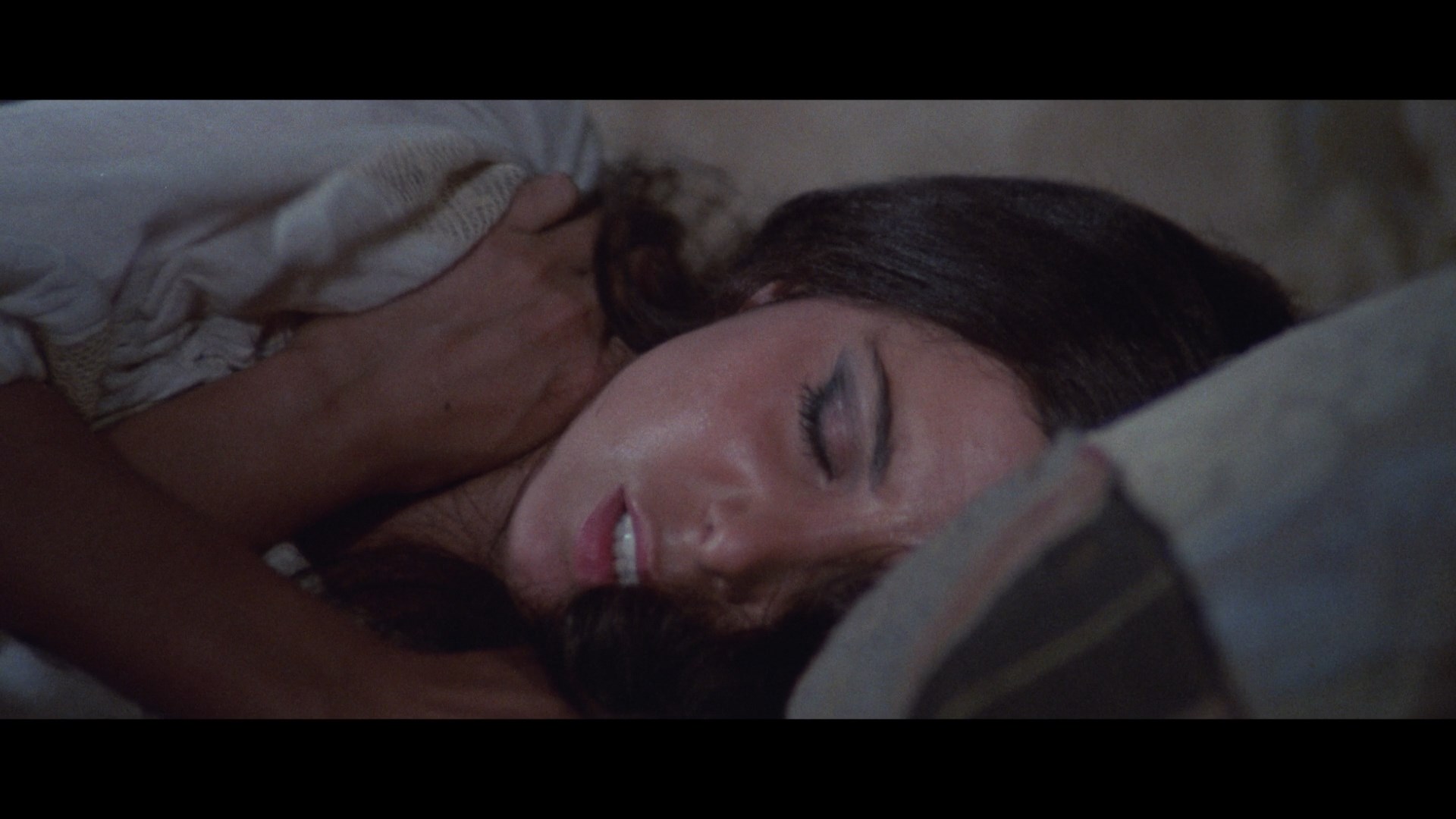 defense of anyone who's oppressed around him. Joe is working his way to Texas where the cowpokes prove to be just as ornery, on top of which there's an insidious migrant smuggling ring forcing Mexicans to work as slaves for the corrupt landowners. When Joe interferes, much violence ensues as well as a romance with Cristina (Romanelli). Joe ends up with a bounty
defense of anyone who's oppressed around him. Joe is working his way to Texas where the cowpokes prove to be just as ornery, on top of which there's an insidious migrant smuggling ring forcing Mexicans to work as slaves for the corrupt landowners. When Joe interferes, much violence ensues as well as a romance with Cristina (Romanelli). Joe ends up with a bounty 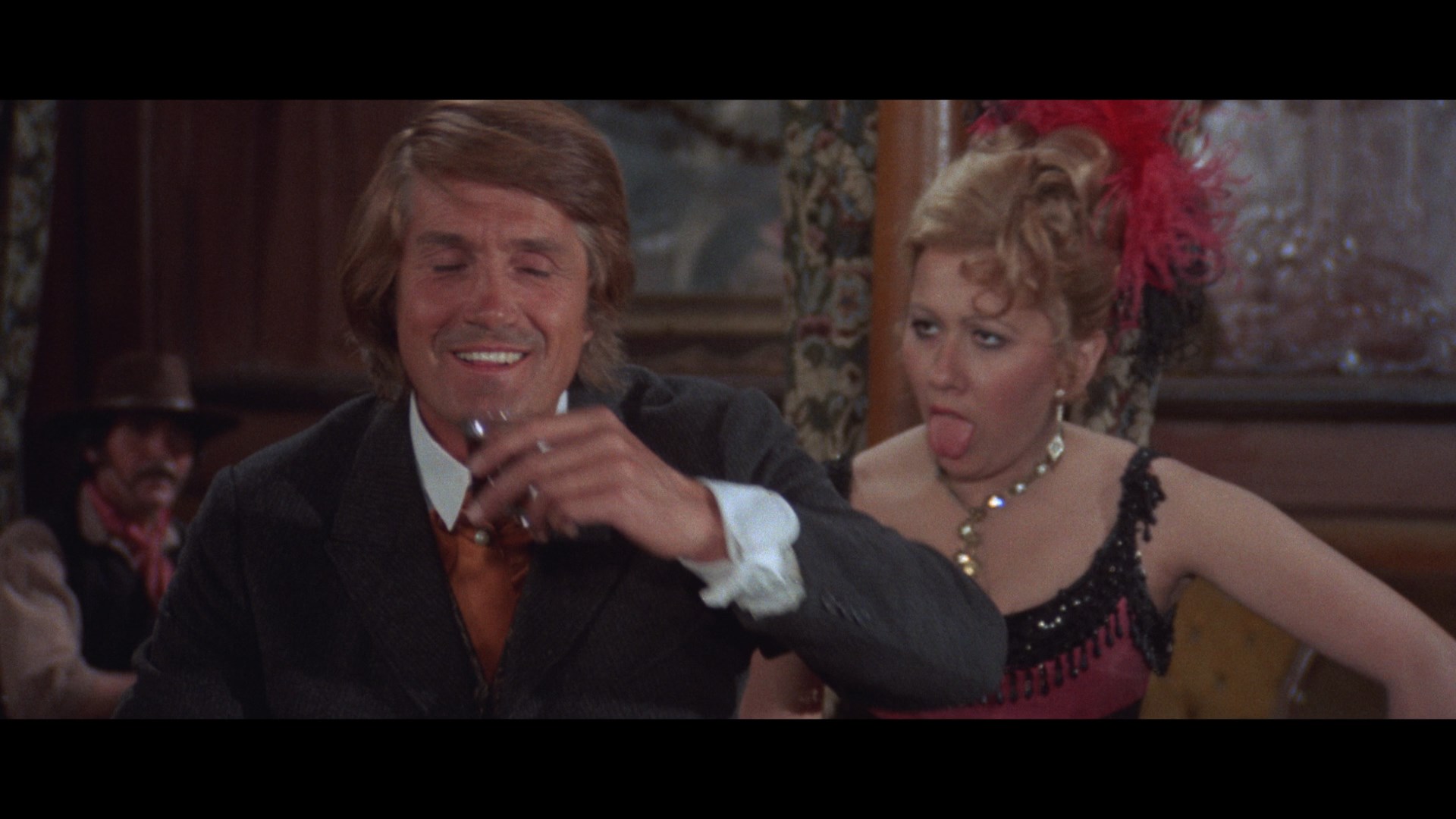 on his head that sends a quartet of deadly trackers on his trail including cannibal Pedro (Hundar), the knife-wielding Scalper Jack (Kinski in a scene-stealing cameo), Burying Sam (Mitchell), and eventually a master Japanese fighter, Mikuja (Mikuriya).
on his head that sends a quartet of deadly trackers on his trail including cannibal Pedro (Hundar), the knife-wielding Scalper Jack (Kinski in a scene-stealing cameo), Burying Sam (Mitchell), and eventually a master Japanese fighter, Mikuja (Mikuriya).
Pure drive-in pulp all the way through, this was yet another wild detour in the career of director Mario Caiano who also blessed the world with Weapons of Death, Eye in the Labyrinth, Nightmare Castle, The Sign of the Coyote, and, uh, Nazi Love Camp 27. He does a solid job of aping the widescreen spaghetti western formula that was still riding fairly high at the time, though he doesn't quite know to shoot standard fight scenes (with several punches and kicks landing very far from their targets). It's tons of fun, and while Lee doesn't exactly give Bruce Lee a run for his money in the charisma department, he delivers in the action moments which occasionally up the ante with gory eyeball and severed hand mayhem. In short, it's a good time for all.
Despite a U.S. VHS from Trans World and a couple of European DVDs (as well as an unauthorized Blu-ray from the now defunct Wild East Productions), this film 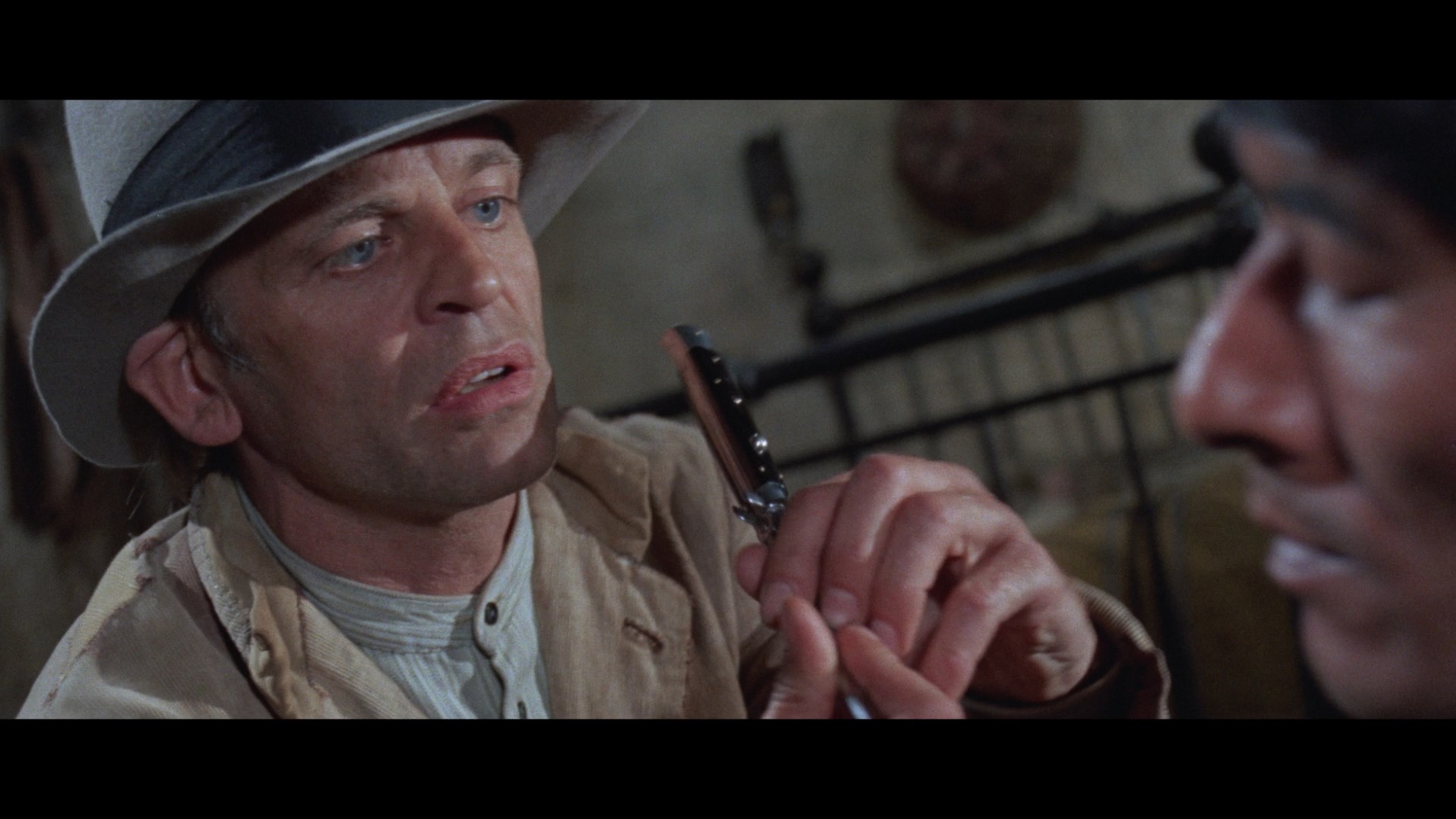 hasn't been the easiest to come across until the 2022 Blu-ray from Cauldron Films (under the simple title Shanghai Joe). The 2K scan from the Italian negative looks very handsome with bright colors and better detail than anything we've had before; it isn't the most crisp-looking
hasn't been the easiest to come across until the 2022 Blu-ray from Cauldron Films (under the simple title Shanghai Joe). The 2K scan from the Italian negative looks very handsome with bright colors and better detail than anything we've had before; it isn't the most crisp-looking 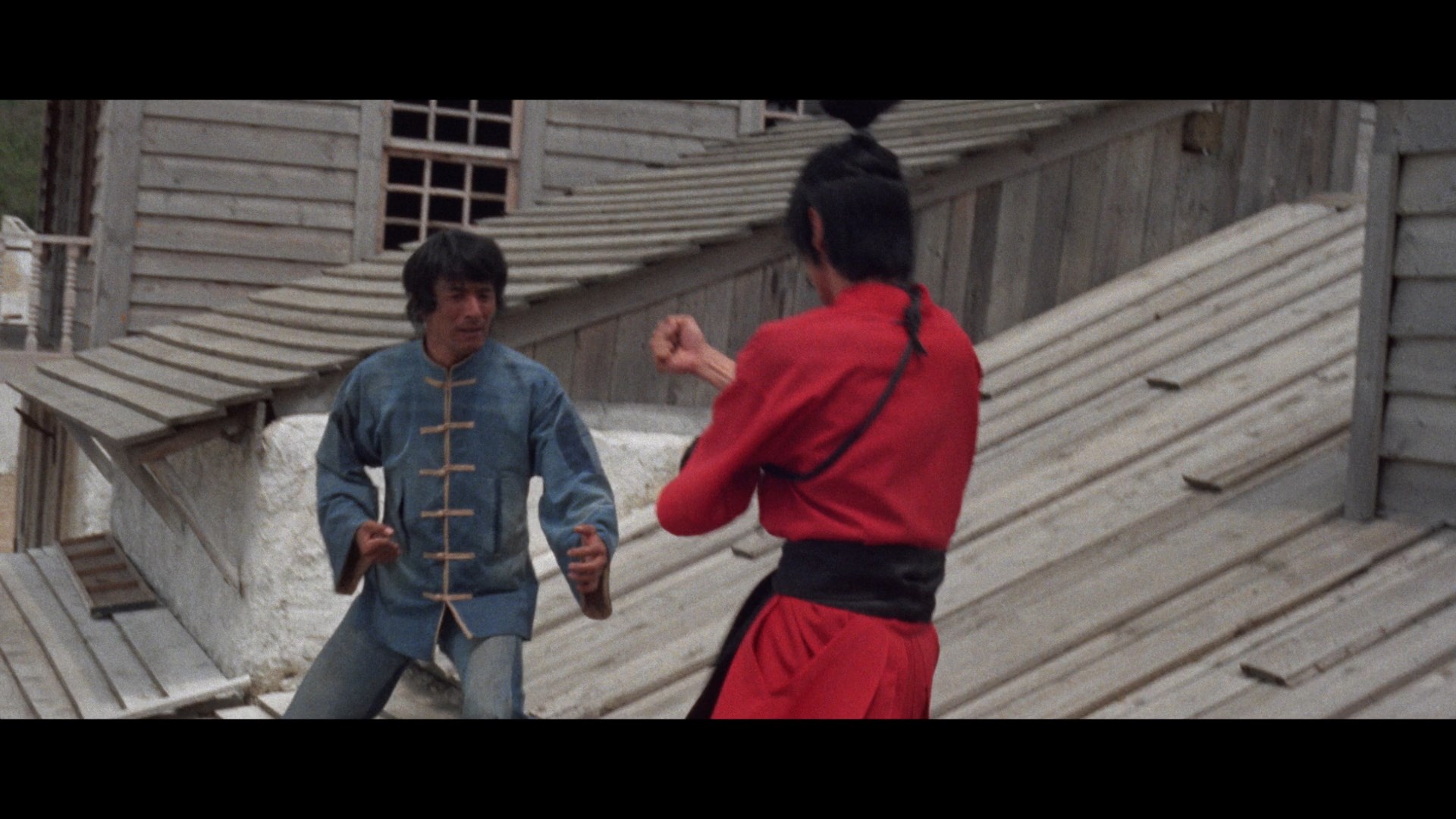 spaghetti western around but this appears to be an aesthetic quality inherent in every version out there. The DTS-HD MA 2.0 English and Italian tracks are included with optional English-translated or English SDH subtitles; both sound great with that Nicolai score having some nice range throughout. An audio commentary by The Spaghetti Western Digest's Mike Hauss obviously focuses on the Italian western angle with lots of info about the shooting locations, the state of the subgenre at the time, the connections between many of the actors, the role of racism in the story, the international nature of many of these films, and the undeniable technical shortcomings of a few moments. There is a hefty amount of rustling and other background noise on and off throughout, so be careful if you're listening with headphones. "Samurai Spirit" (9m11s) is an Italian-language subtitled interview with Master Katsutoshi Mikuriya who was induced by Caiano and company to help find a star for the film and ended up being cast in a relatively short but very memorable part for the climax. "East Meets West: Italian Style" (19m45s) is a visual essay by film historian Eric Zaldivar chronicling the progression of these fusions from the all-star Red Sun (and some earlier Nikkatsu obscurities) through Tony Anthony's Stranger series, The Stranger and the Gunfighter, the bizarre Tomas Milian "Chinese" action comedies, Kung Fu Brothers in the Wild West, and "kinda sorta" entries like Take a Hard Ride. Also included are the very striking theatrical trailer, a gallery (1m49s) of international poster and ad art, and a bonus CD soundtrack of Nicolai's score. The limited 1,500-unit edition also comes with a folded poster and a slipcase.
spaghetti western around but this appears to be an aesthetic quality inherent in every version out there. The DTS-HD MA 2.0 English and Italian tracks are included with optional English-translated or English SDH subtitles; both sound great with that Nicolai score having some nice range throughout. An audio commentary by The Spaghetti Western Digest's Mike Hauss obviously focuses on the Italian western angle with lots of info about the shooting locations, the state of the subgenre at the time, the connections between many of the actors, the role of racism in the story, the international nature of many of these films, and the undeniable technical shortcomings of a few moments. There is a hefty amount of rustling and other background noise on and off throughout, so be careful if you're listening with headphones. "Samurai Spirit" (9m11s) is an Italian-language subtitled interview with Master Katsutoshi Mikuriya who was induced by Caiano and company to help find a star for the film and ended up being cast in a relatively short but very memorable part for the climax. "East Meets West: Italian Style" (19m45s) is a visual essay by film historian Eric Zaldivar chronicling the progression of these fusions from the all-star Red Sun (and some earlier Nikkatsu obscurities) through Tony Anthony's Stranger series, The Stranger and the Gunfighter, the bizarre Tomas Milian "Chinese" action comedies, Kung Fu Brothers in the Wild West, and "kinda sorta" entries like Take a Hard Ride. Also included are the very striking theatrical trailer, a gallery (1m49s) of international poster and ad art, and a bonus CD soundtrack of Nicolai's score. The limited 1,500-unit edition also comes with a folded poster and a slipcase.
Reviewed on December 22, 2022.



 that occurred between European exploitation and Hong Kong kung-fu films produced a wide and
that occurred between European exploitation and Hong Kong kung-fu films produced a wide and  weird spectrum of films like Antonio Margheriti's The Stranger and the Gunfighter, Hammer's The Legend of the 7 Golden Vampires, Kung Fu? From Sicily with Fury, and the eventual artistic apex with Bruce Le's cameo in Pieces. At the beginning of the wave is one of the best entries, Il mio nome è Shanghai Joe, which circulated in theaters under titles like The Fighting Fist of Shanghai Joe and The Dragon Strikes Back. Drenched in spaghetti western style right down to its twangy Bruno Nicolai score, it's also filled with high-energy martial arts scenes (some of it quite bloody) and remains unique for its sympathetic portrayal of an Asian protagonist up against a variety of physical opponents and racist attitudes. The film should have been the springboard for a string of Shanghai Joe adventures, though only one vastly inferior sequel, 1975's Return of Shanghai Joe, ever materialized.
weird spectrum of films like Antonio Margheriti's The Stranger and the Gunfighter, Hammer's The Legend of the 7 Golden Vampires, Kung Fu? From Sicily with Fury, and the eventual artistic apex with Bruce Le's cameo in Pieces. At the beginning of the wave is one of the best entries, Il mio nome è Shanghai Joe, which circulated in theaters under titles like The Fighting Fist of Shanghai Joe and The Dragon Strikes Back. Drenched in spaghetti western style right down to its twangy Bruno Nicolai score, it's also filled with high-energy martial arts scenes (some of it quite bloody) and remains unique for its sympathetic portrayal of an Asian protagonist up against a variety of physical opponents and racist attitudes. The film should have been the springboard for a string of Shanghai Joe adventures, though only one vastly inferior sequel, 1975's Return of Shanghai Joe, ever materialized.  defense of anyone who's oppressed around him. Joe is working his way to Texas where the cowpokes prove to be just as ornery, on top of which there's an insidious migrant smuggling ring forcing Mexicans to work as slaves for the corrupt landowners. When Joe interferes, much violence ensues as well as a romance with Cristina (Romanelli). Joe ends up with a bounty
defense of anyone who's oppressed around him. Joe is working his way to Texas where the cowpokes prove to be just as ornery, on top of which there's an insidious migrant smuggling ring forcing Mexicans to work as slaves for the corrupt landowners. When Joe interferes, much violence ensues as well as a romance with Cristina (Romanelli). Joe ends up with a bounty  on his head that sends a quartet of deadly trackers on his trail including cannibal Pedro (Hundar), the knife-wielding Scalper Jack (Kinski in a scene-stealing cameo), Burying Sam (Mitchell), and eventually a master Japanese fighter, Mikuja (Mikuriya).
on his head that sends a quartet of deadly trackers on his trail including cannibal Pedro (Hundar), the knife-wielding Scalper Jack (Kinski in a scene-stealing cameo), Burying Sam (Mitchell), and eventually a master Japanese fighter, Mikuja (Mikuriya). hasn't been the easiest to come across until the 2022 Blu-ray from Cauldron Films (under the simple title Shanghai Joe). The 2K scan from the Italian negative looks very handsome with bright colors and better detail than anything we've had before; it isn't the most crisp-looking
hasn't been the easiest to come across until the 2022 Blu-ray from Cauldron Films (under the simple title Shanghai Joe). The 2K scan from the Italian negative looks very handsome with bright colors and better detail than anything we've had before; it isn't the most crisp-looking  spaghetti western around but this appears to be an aesthetic quality inherent in every version out there. The DTS-HD MA 2.0 English and Italian tracks are included with optional English-translated or English SDH subtitles; both sound great with that Nicolai score having some nice range throughout. An audio commentary by The Spaghetti Western Digest's Mike Hauss obviously focuses on the Italian western angle with lots of info about the shooting locations, the state of the subgenre at the time, the connections between many of the actors, the role of racism in the story, the international nature of many of these films, and the undeniable technical shortcomings of a few moments. There is a hefty amount of rustling and other background noise on and off throughout, so be careful if you're listening with headphones. "Samurai Spirit" (9m11s) is an Italian-language subtitled interview with Master Katsutoshi Mikuriya who was induced by Caiano and company to help find a star for the film and ended up being cast in a relatively short but very memorable part for the climax. "East Meets West: Italian Style" (19m45s) is a visual essay by film historian Eric Zaldivar chronicling the progression of these fusions from the all-star Red Sun (and some earlier Nikkatsu obscurities) through Tony Anthony's Stranger series, The Stranger and the Gunfighter, the bizarre Tomas Milian "Chinese" action comedies, Kung Fu Brothers in the Wild West, and "kinda sorta" entries like Take a Hard Ride. Also included are the very striking theatrical trailer, a gallery (1m49s) of international poster and ad art, and a bonus CD soundtrack of Nicolai's score. The limited 1,500-unit edition also comes with a folded poster and a slipcase.
spaghetti western around but this appears to be an aesthetic quality inherent in every version out there. The DTS-HD MA 2.0 English and Italian tracks are included with optional English-translated or English SDH subtitles; both sound great with that Nicolai score having some nice range throughout. An audio commentary by The Spaghetti Western Digest's Mike Hauss obviously focuses on the Italian western angle with lots of info about the shooting locations, the state of the subgenre at the time, the connections between many of the actors, the role of racism in the story, the international nature of many of these films, and the undeniable technical shortcomings of a few moments. There is a hefty amount of rustling and other background noise on and off throughout, so be careful if you're listening with headphones. "Samurai Spirit" (9m11s) is an Italian-language subtitled interview with Master Katsutoshi Mikuriya who was induced by Caiano and company to help find a star for the film and ended up being cast in a relatively short but very memorable part for the climax. "East Meets West: Italian Style" (19m45s) is a visual essay by film historian Eric Zaldivar chronicling the progression of these fusions from the all-star Red Sun (and some earlier Nikkatsu obscurities) through Tony Anthony's Stranger series, The Stranger and the Gunfighter, the bizarre Tomas Milian "Chinese" action comedies, Kung Fu Brothers in the Wild West, and "kinda sorta" entries like Take a Hard Ride. Also included are the very striking theatrical trailer, a gallery (1m49s) of international poster and ad art, and a bonus CD soundtrack of Nicolai's score. The limited 1,500-unit edition also comes with a folded poster and a slipcase.